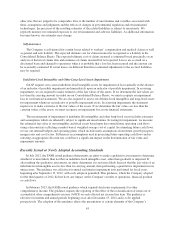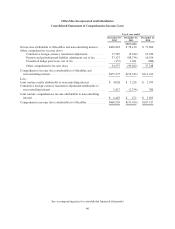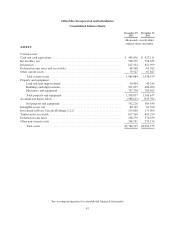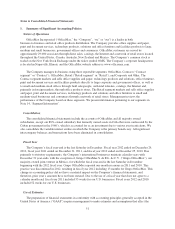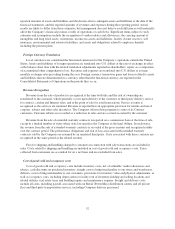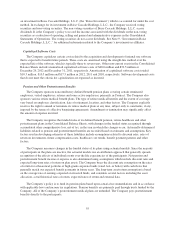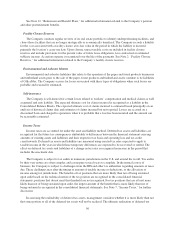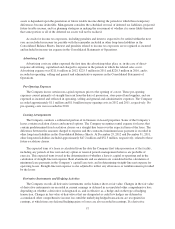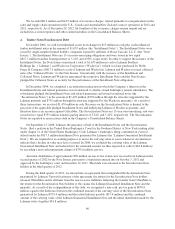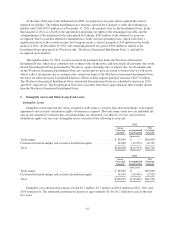OfficeMax 2012 Annual Report Download - page 89
Download and view the complete annual report
Please find page 89 of the 2012 OfficeMax annual report below. You can navigate through the pages in the report by either clicking on the pages listed below, or by using the keyword search tool below to find specific information within the annual report.Operating, selling and general and administrative expenses
Operating, selling and general and administrative expenses include employee payroll, payroll taxes and
benefits and other expenses related to selling activities, distribution center activities in our Contract segment such
as picking/packing and shipping/receiving, as well as management and staff functions, such as information
technology, human resources, finance, legal, merchandising and product development functions. Expenses
related to selling activities include costs associated with store personnel, advertising, sales force personnel and
other selling activities. Operating, selling and general and administrative expenses also include expenses and
income related to our frozen pension plans and other legacy operating activities, such as dividends related to our
investment in Boise Cascade Holdings, L.L.C.
Cash and Cash Equivalents
Cash equivalents include short-term debt instruments that have an original maturity of three months or less
at the date of purchase. The Company’s banking arrangements allow the Company to fund outstanding checks
when presented to the financial institution for payment. This cash management practice frequently results in a net
cash overdraft position for accounting purposes, which occurs when total issued checks exceed available cash
balances at a single financial institution. The Company records its outstanding checks and bank overdrafts in
accounts payable in the Consolidated Balance Sheets. The impact of outstanding checks and bank overdrafts are
reported in cash provided by operations and cash used for financing, respectively, in the Consolidated Statements
of Cash Flows.
Accounts Receivable
Accounts receivable relate primarily to amounts owed by customers for trade sales of products and services
and amounts due from vendors under volume purchase rebate, cooperative advertising and various other
marketing programs. An allowance for doubtful accounts is recorded to provide for estimated losses resulting
from uncollectible accounts, and is the Company’s best estimate of the amount of probable credit losses in the
Company’s existing accounts receivable. Management believes that the Company’s exposure to credit risk
associated with accounts receivable is limited due to the size and diversity of its customer and vendor base,
which extends across many different industries and geographic regions. In the fourth quarter of 2011, we became
aware of financial difficulties at one of our large Contract customers. We granted the customer extended payment
terms and implemented creditor oversight provisions. The receivable from this customer was $30 million at
December 29, 2012, and the customer is paying according to the agreed upon terms. Substantially all of this
balance has been collected to date. Based on our ongoing sales to this customer, we continue to carry similar
receivable balances, which we monitor closely.
At December 29, 2012 and December 31, 2011, the Company had allowances for doubtful accounts of
$4.3 million and $3.9 million, respectively.
Vendor Rebates and Allowances
We participate in volume purchase rebate programs, some of which provide for tiered rebates based on
defined levels of purchase volume. We also participate in programs that enable us to receive additional vendor
subsidies by promoting the sale of vendor products. Vendor rebates and allowances are accrued as earned.
Rebates and allowances received as a result of attaining defined purchase levels are accrued over the incentive
period based on the terms of the vendor arrangement and estimates of qualifying purchases during the rebate
program period. These estimates are reviewed on a quarterly basis and adjusted for changes in anticipated
product sales and expected purchase levels. Vendor rebates and allowances earned are recorded as a reduction in
the cost of merchandise inventories and are included in operations (as a reduction of cost of goods sold) in the
period the related product is sold.
53


